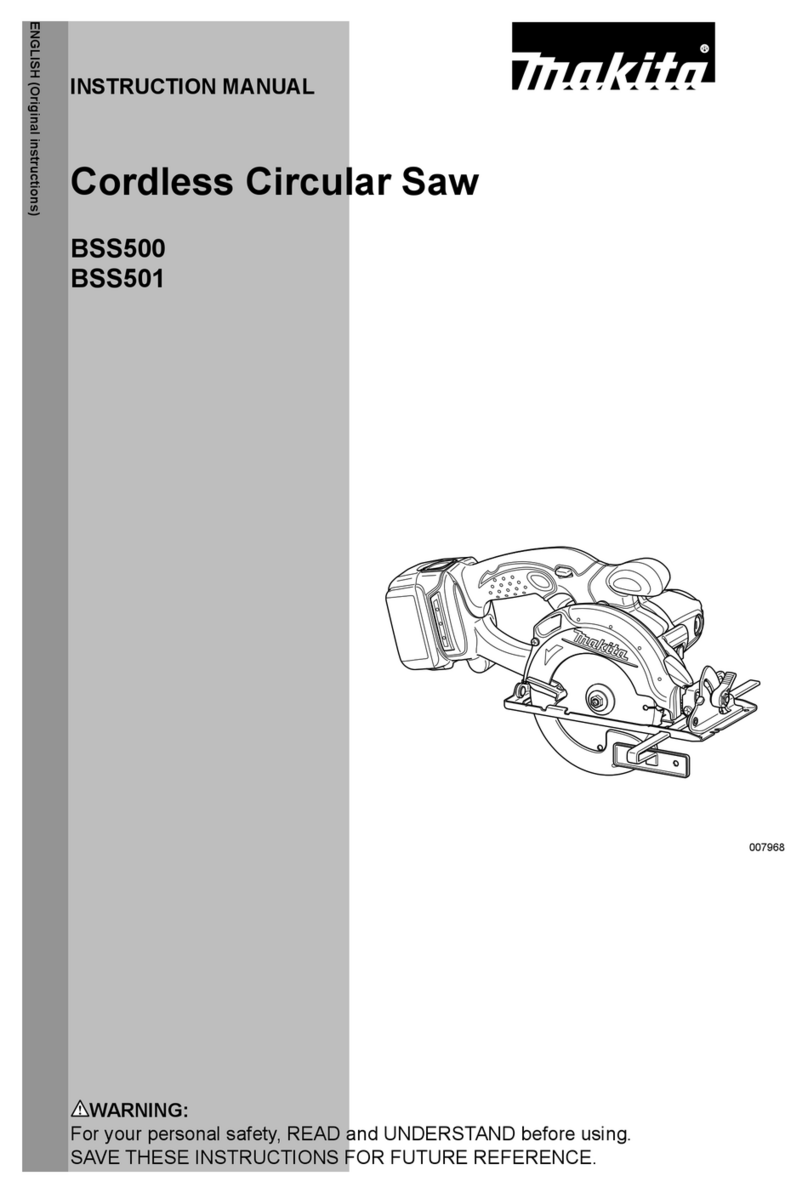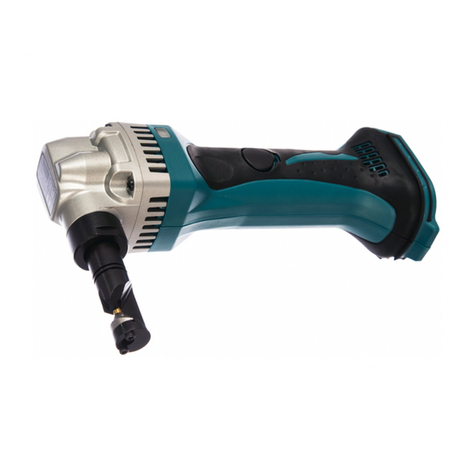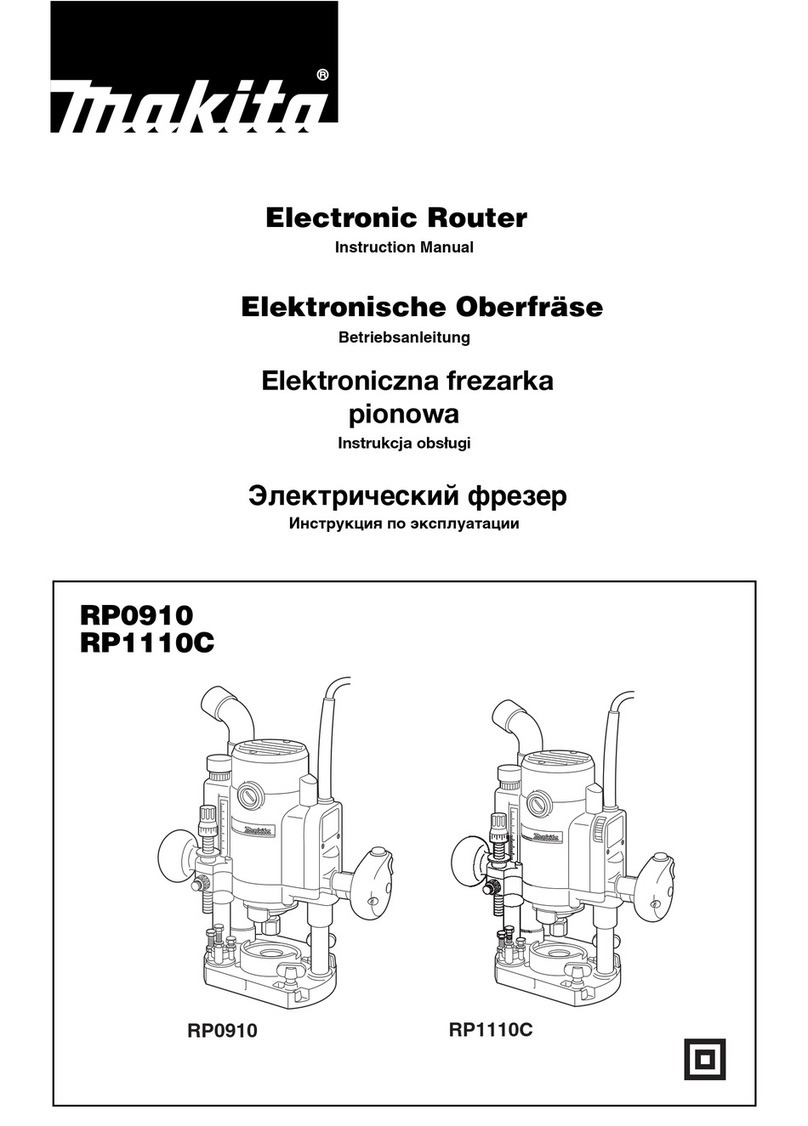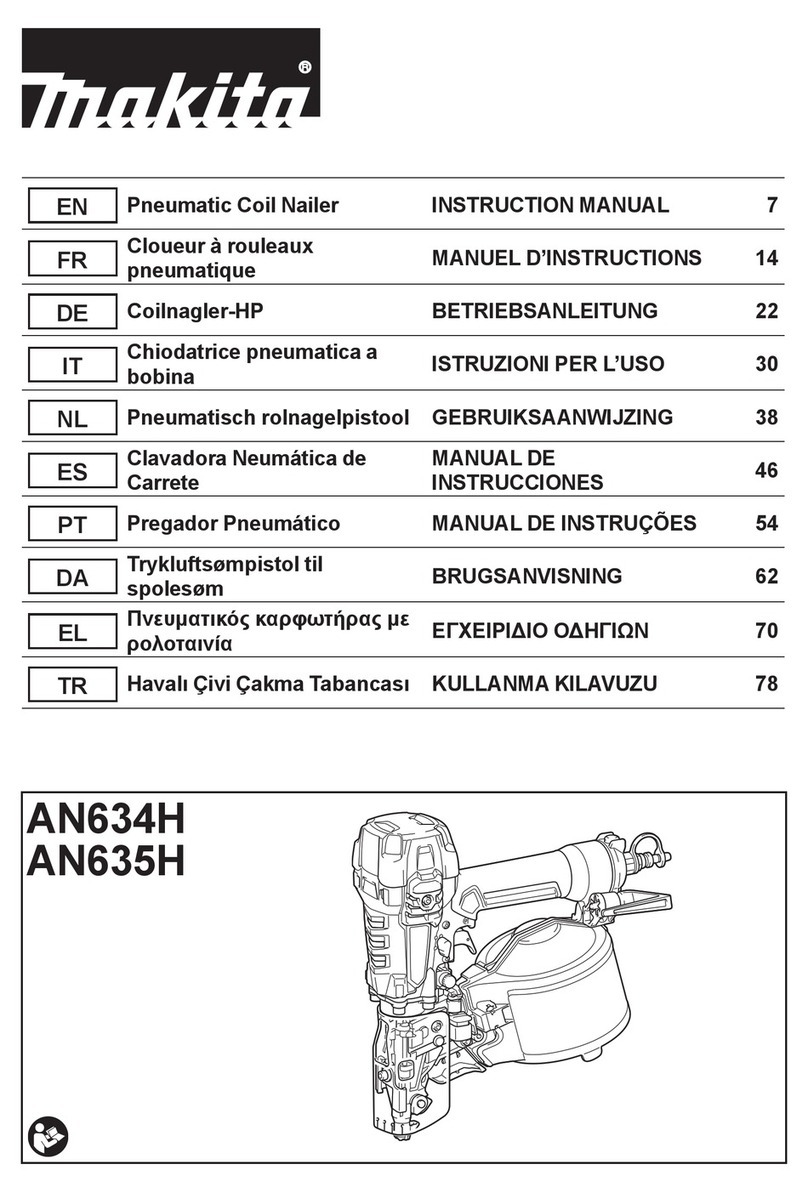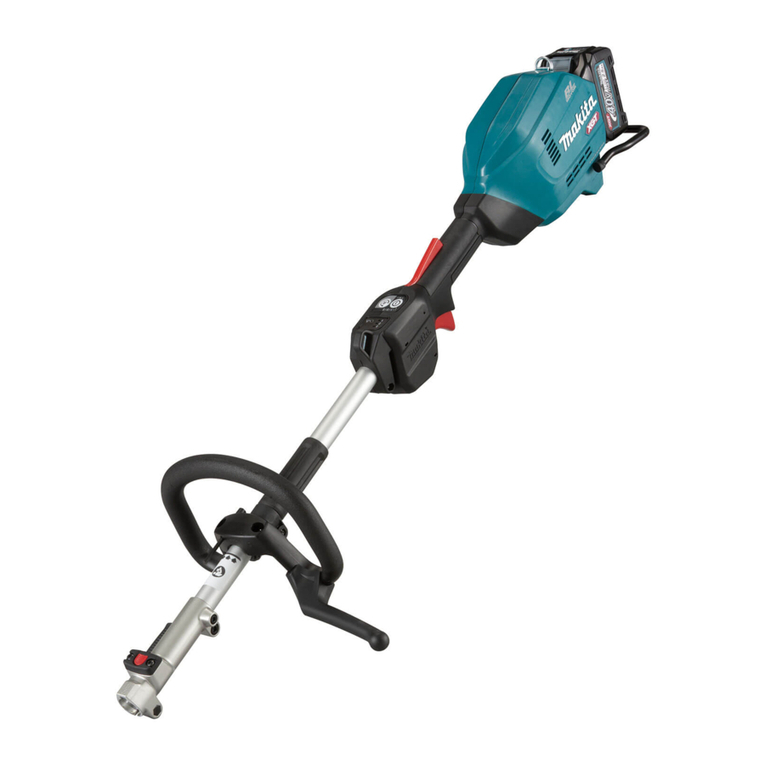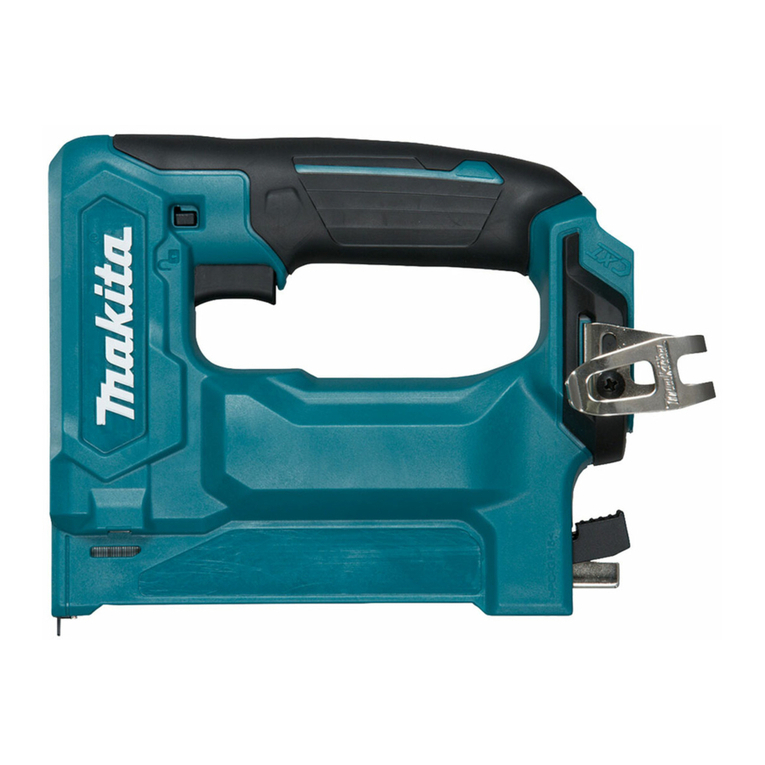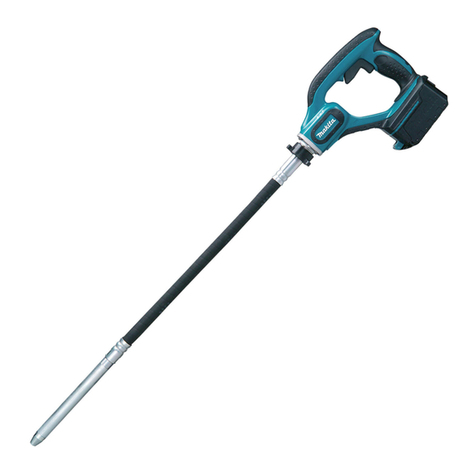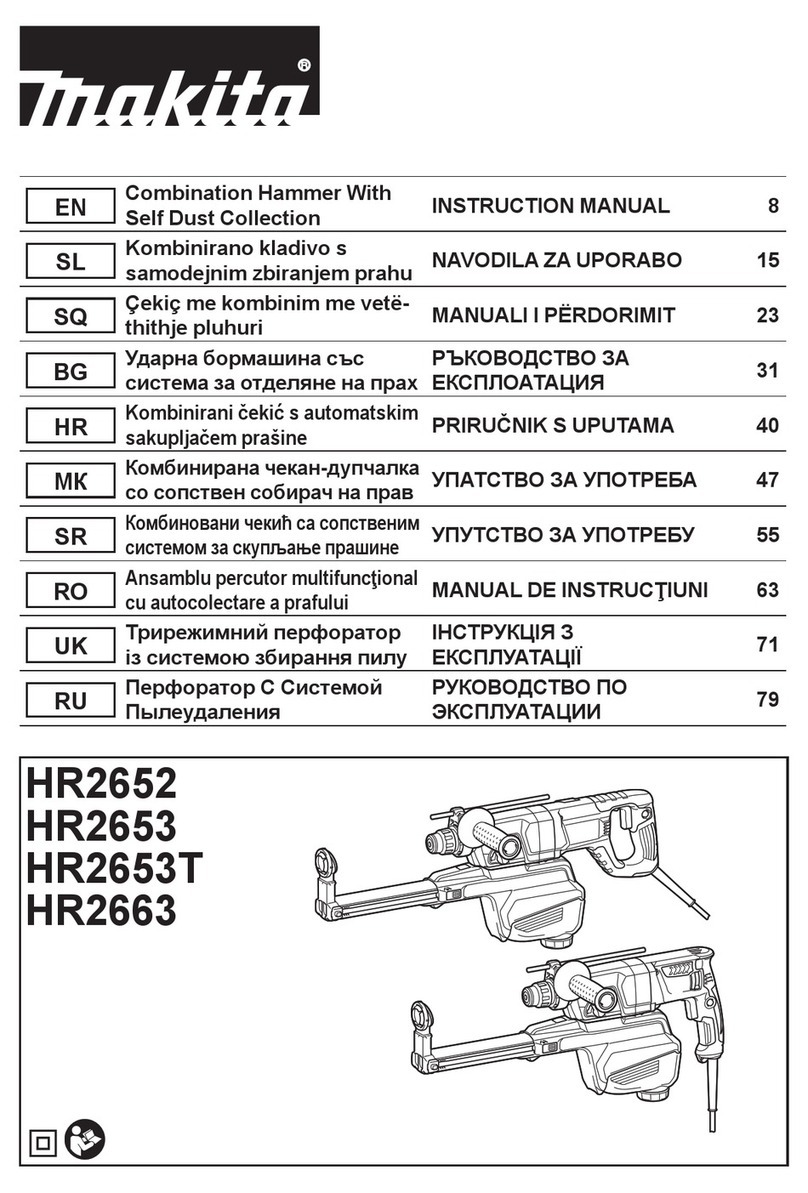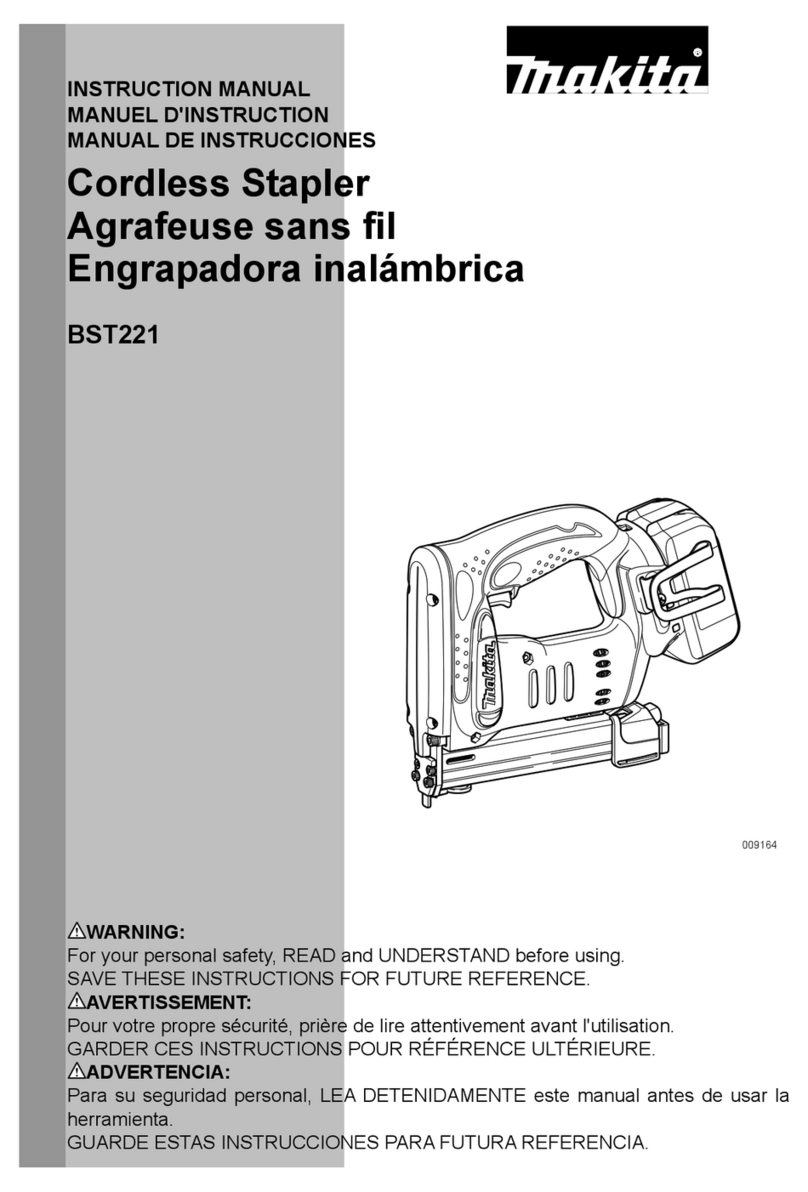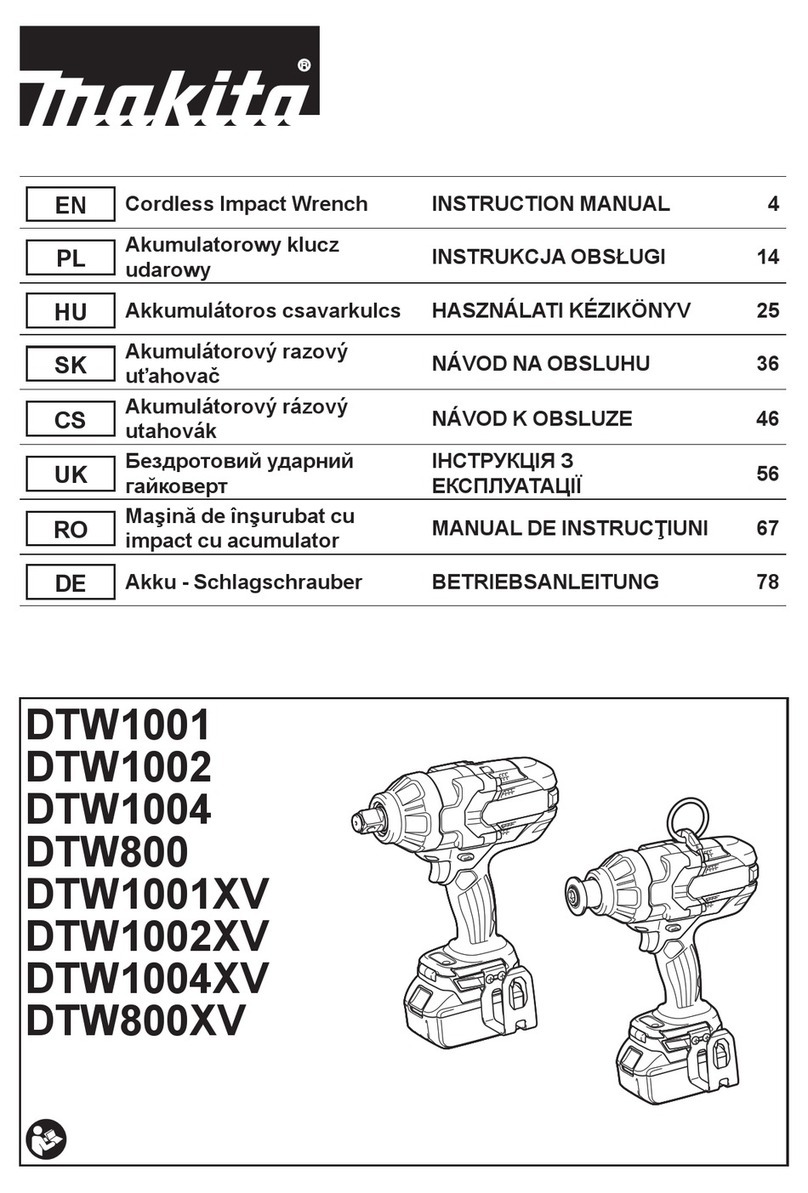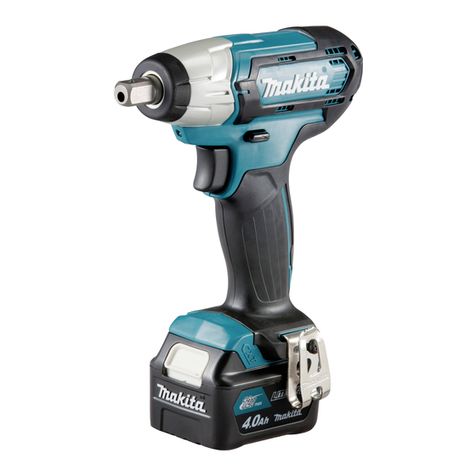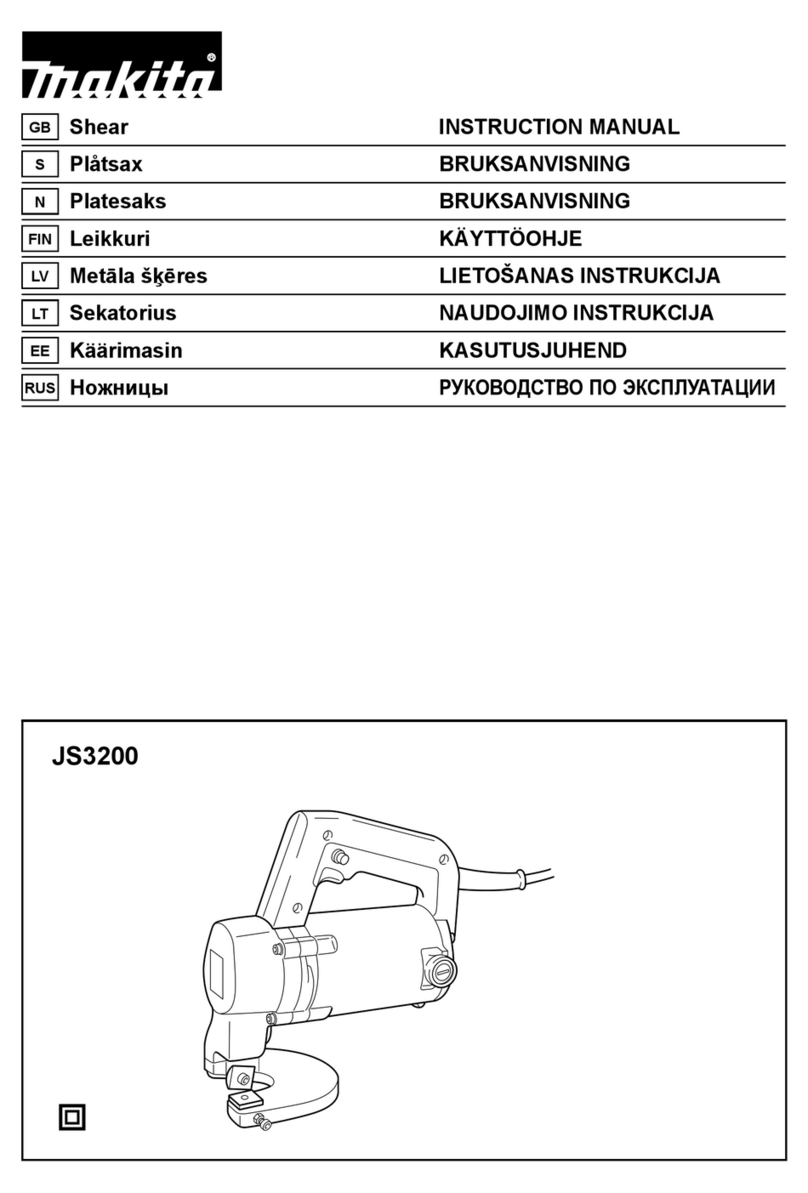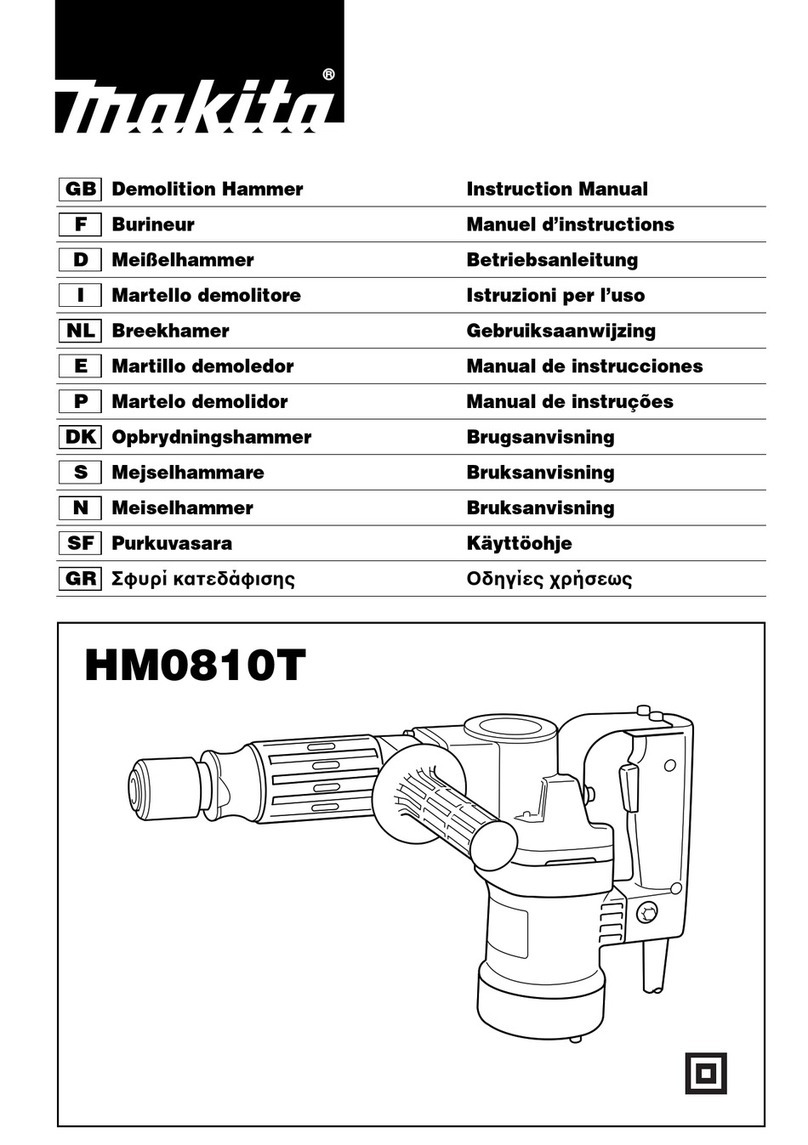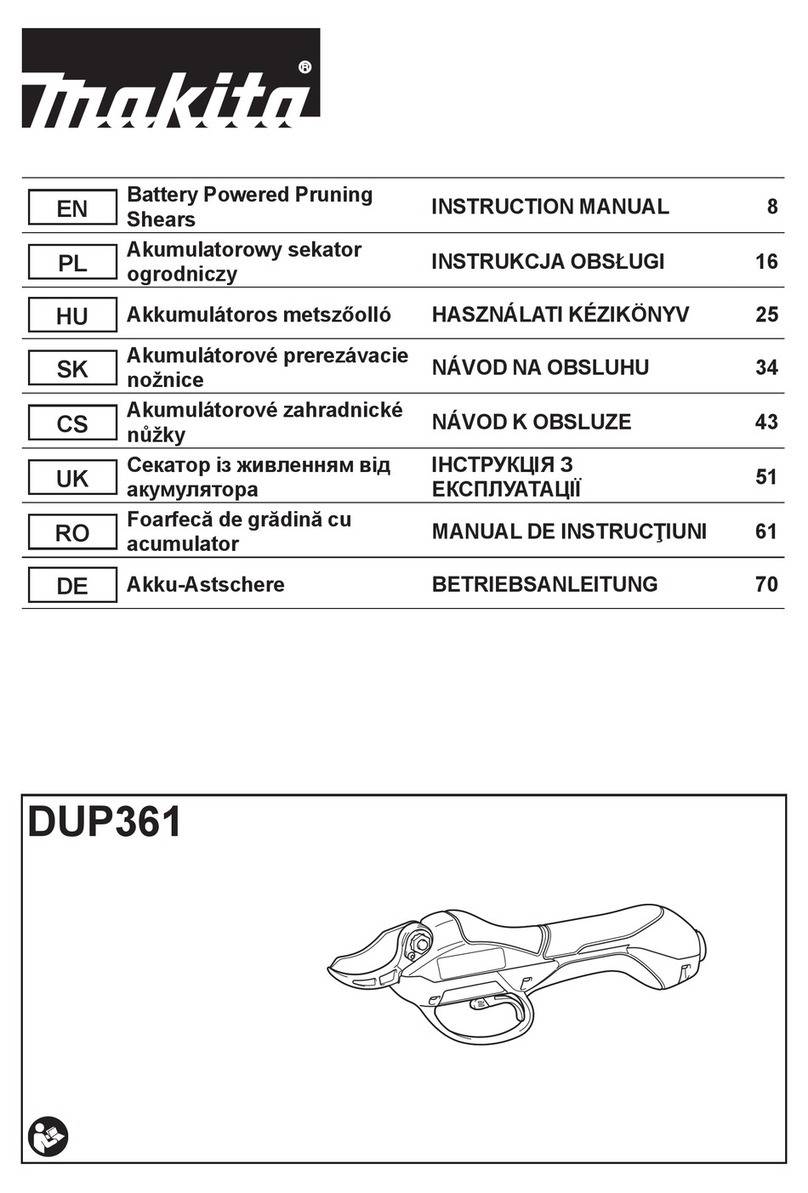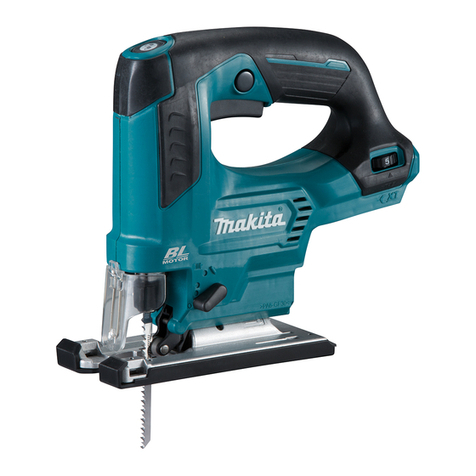3
11. Do not abuse the cord.
Never carry the tool by the cord or yank it to
disconnect it from the socket. Keep the cord away
from heat, oil and sharp edges.
12. Secure work.
Use clamps or a vice to hold the work. It is safer
than using your hand and it frees both hands to
operate the tool.
13. Do not overreach.
Keep proper footing and balance at all times.
14. Maintain tools with care.
Keep cutting tools sharp and clean for better and
safer performance. Follow instructions for
lubrication and changing accessories. Inspect tool
cord periodically and if damaged have it repaired
by an authorized service facility. Inspect
extension cords periodically and replace, if
damaged. Keep handles dry, clean and free from
oil and grease.
15. Disconnect tools.
When not in use, before servicing and when
changing accessories such as blades, bits and
cutters.
16. Remove adjusting keys and wrenches.
Form the habit of checking to see that keys and
adjusting wrenches are removed from the tool
before turning it on.
17. Avoid unintentional starting.
Do not carry a plugged-in tool with a finger on the
switch. Ensure switch is off when plugging in.
18. Use outdoor extension leads.
When tool is used outdoors, use only extension
cords intended for outdoor use.
19. Stay alert.
Watch what you are doing. Use common sense.
Do not operate tool when you are tired.
20. Check damaged parts.
Before further use of the tool, a guard or other
part that is damaged should be carefully checked
to determine that it will operate properly and
perform its intended function. Check for alignment
of moving parts, free running of moving parts,
breakage of parts, mounting and any other
conditions that may affect its operation. A guard
or other part that is damaged should be properly
repaired or replaced by an authorized service
center unless otherwise indicated in this
instruction manual. Have defective switches
replaced by an authorized service facility. Do not
use the tool if the switch does not turn it on and
off.
21. Warning.
The use of any accessory or attachment, other
than those recommended in this instruction
manual or the catalog, may present a risk of
personal injury.
22. Have your tool repaired by a qualified person.
This electric tool is in accordance with the
relevant safety requirements. Repairs should only
be carried out by qualified persons using original
spare parts, otherwise this may result in
considerable danger to the user.
GEB103-1
SHARPENER SAFETY
WARNINGS
1. Wear eye protection.
2. Always use guards and eye shields.
3. Use only wheels having a maximum operating
speed at least as high as "No Load RPM"
marked on the tool's nameplate.
4. Check the wheel carefully for cracks or
damage before operation. Replace cracked or
damaged wheel immediately.
5. Secure the wheel carefully.
6. Be careful not to damage the spindle or the
bolt, or the wheel itself might break.
7. Keep a space of 5 mm (3/16") between the
sharpening platform guide (rail) and the
grinding wheel.
8. Keep hands away from rotating parts.
9. Make sure the workpiece is not contacting the
wheel before the switch is turned on.
10. Before using the tool on an actual workpiece,
let it run for several minutes. Watch for flutter
that might be caused by incorrect installation
or a poorly balanced wheel.
11. Use the upper surface of the wheel only. Do
not use the side surface.
12. If the wheel stops during operation, makes an
odd noise or begins to vibrate, switch off the
tool immediately.
13. Always switch off and wait for the wheel to
come to a complete stop before adjustment or
inspection.
14. Do not touch the workpiece immediately after
operation; it may be extremely hot and could
burn your skin.
15. Dry the wheel by idling the tool after operation
to prevent the wheel from freezing in cold
weather. Freezing can crack the wheel.
16. Store wheels in a dry location only.
17. Do not overtighten wheel nut.
18. Use only flanges furnished with this tool.
SAVE THESE INSTRUCTIONS.


